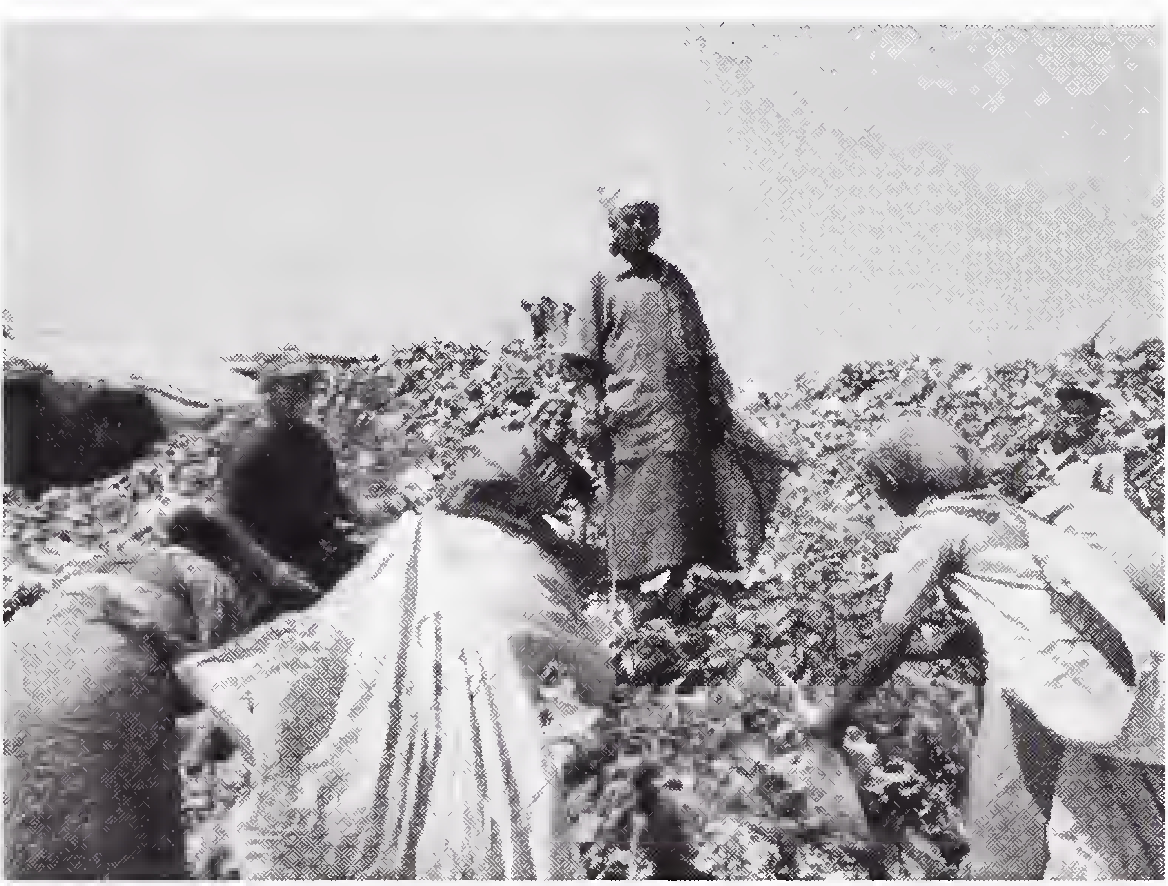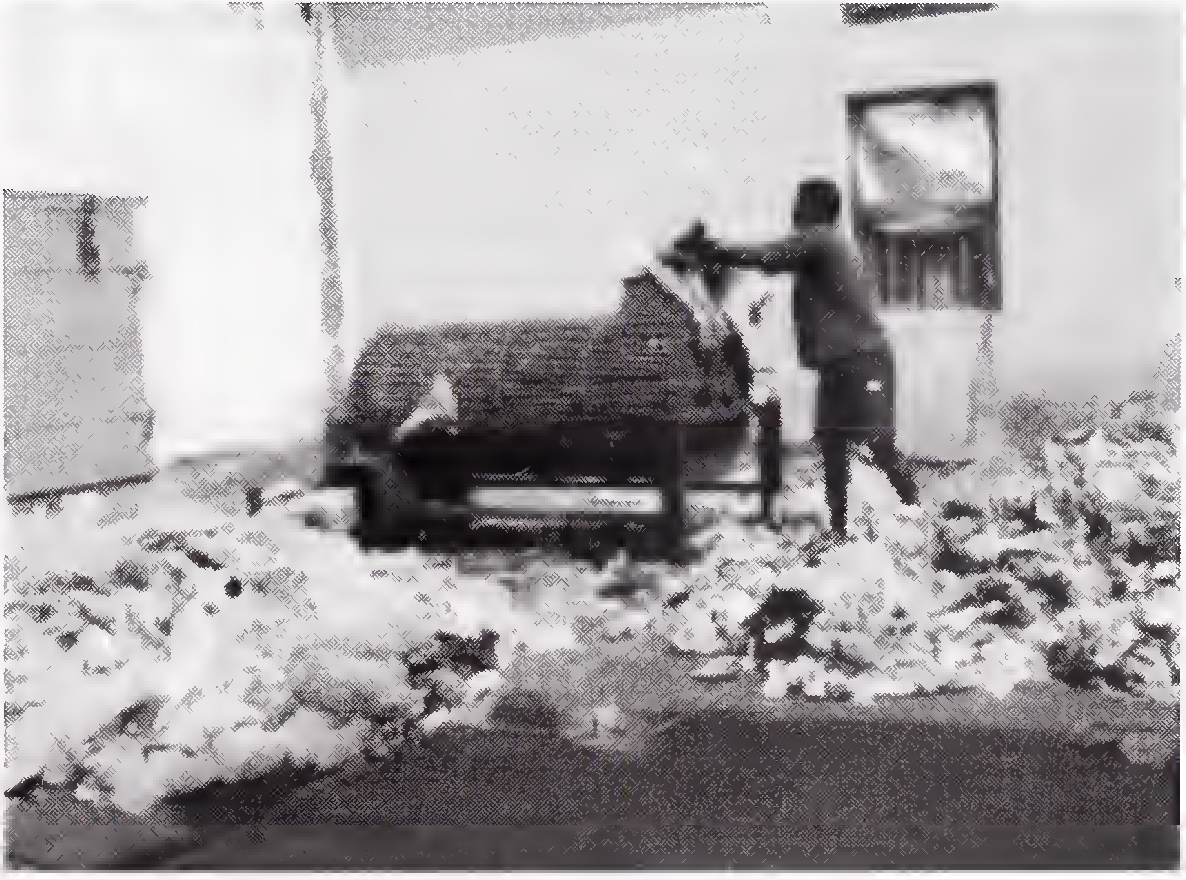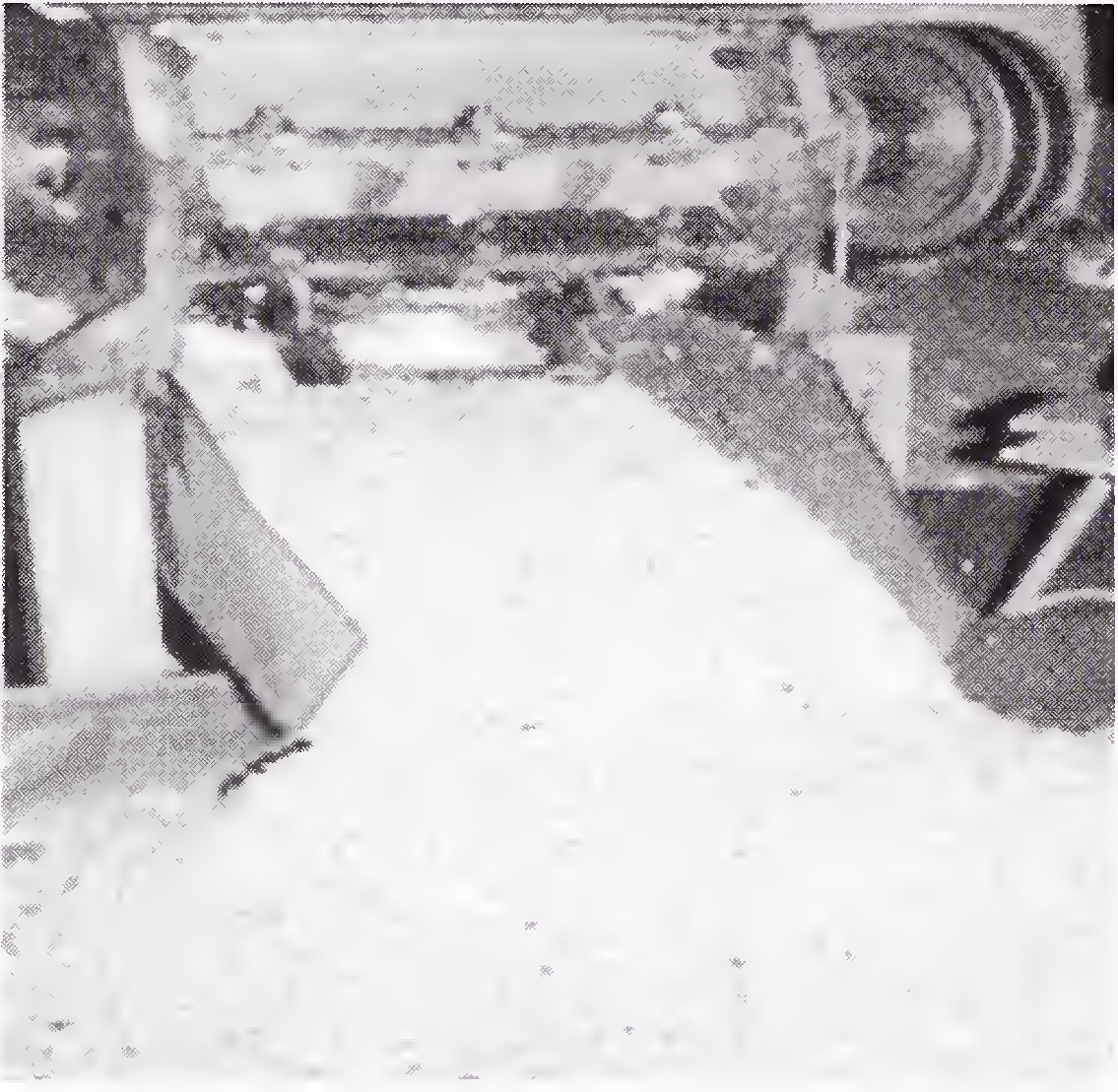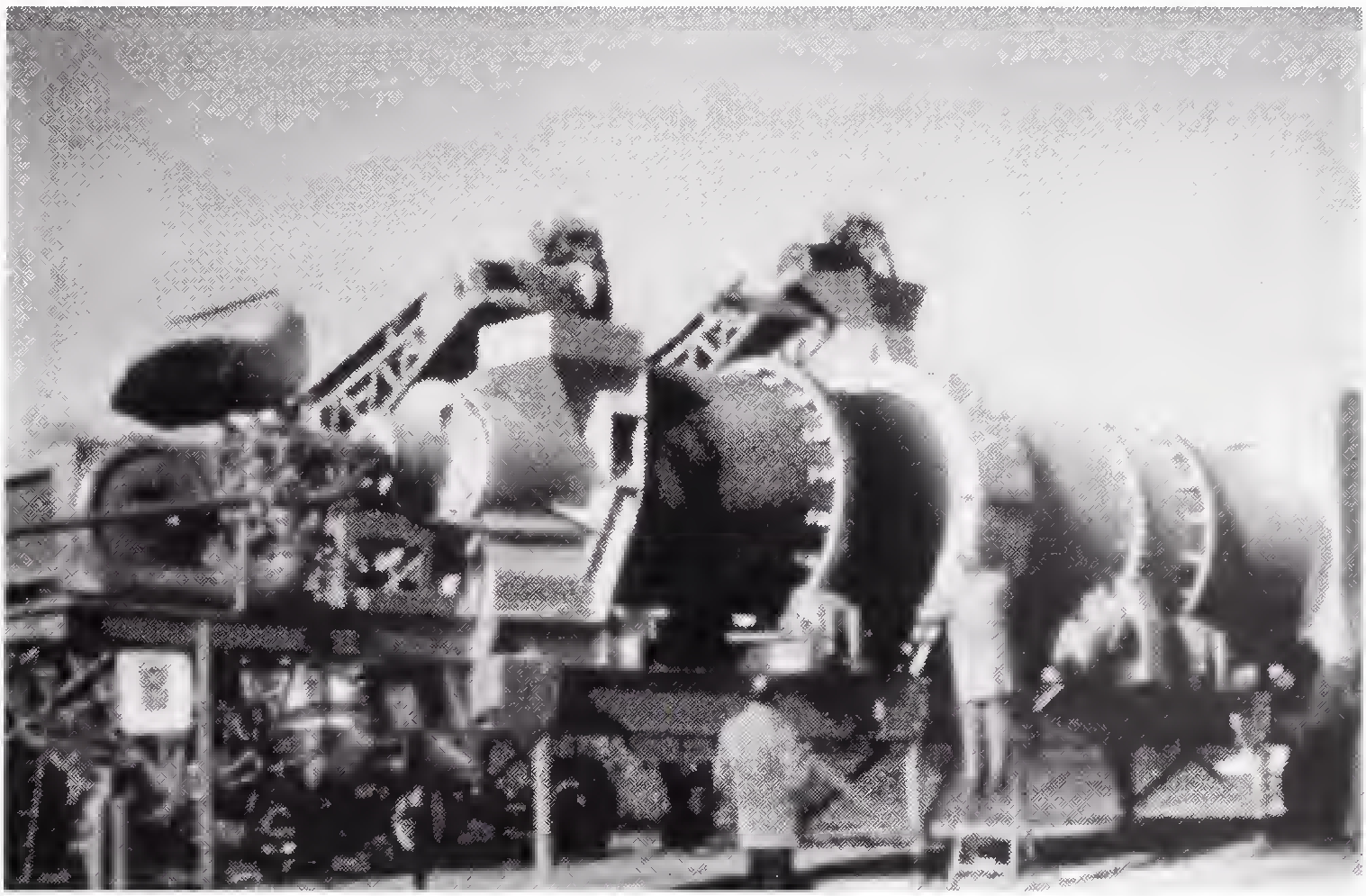PREAMBLE (NOT PART OF THE STANDARD)
This library of books, audio, video, and other materials from and about India is curated and maintained by Public Resource. The purpose of this library is to assist the students and the lifelong learners of India in their pursuit of an education so that they may better their status and their opportunities and to secure for themselves and for others justice, social, economic and political.
This item has been posted for non-commercial purposes and facilitates fair dealing usage of academic and research materials for private use including research, for criticism and review of the work or of other works and reproduction by teachers and students in the course of instruction. Many of these materials are either unavailable or inaccessible in libraries in India, especially in some of the poorer states and this collection seeks to fill a major gap that exists in access to knowledge.
For other collections we curate and more information, please visit the Bharat Ek Khoj page. Jai Gyan!
END OF PREAMBLE (NOT PART OF THE STANDARD)
IRC:SP:98-2013
GUIDELINES FOR THE USE OF WASTE PLASTIC IN HOT BITUMINOUS MIXES (DRY PROCESS) IN WEARING COURSES
Published by:
INDIAN ROADS CONGRESS
Kama Koti Marg,
Sector-6, R.K. Puram,
New Delhi-110 022
November, 2013
Price : ₹ 300/-
(Plus Packing & Postage)
PERSONNEL OF THE HIGHWAYS SPECIFICATIONS AND STANDARDS COMMITTEE
(As on 19th July, 2013)
| 1. |
Kandasamy, C.
(Convenor) |
Director General (RD) & Spl. Secy. to Govt. of India, Ministry of Road Transport & Highways, Transport Bhavan, New Delhi |
| 2. |
Patankar, V.L.
(Co-Convenor) |
Addl. Director General, Ministry of Road Transport & Highways, Transport Bhavan, New Delhi |
| 3. |
Kumar, Manoj
(Member-Secretary) |
Chief Engineer (R) S,R&T, Ministry of Road Transport & Highways, Transport Bhavan, New Delhi |
| Members |
| 4. |
Basu, S.B. |
Chief Engineer (Retd.) MORTH, New Delhi |
| 5. |
Bongirwar, P.L. |
Advisor, L & T, Mumbai |
| 6. |
Bose, Dr. Sunil |
Head FPC Divn. CRRI (Retd.), Faridabad |
| 7. |
Duhsaka, Vanlal |
Chief Engineer, PWD (Highways), Aizwal (Mizoram) |
| 8. |
Gangopadhyay, Dr. S. |
Director, Central Road Research Institute, New Delhi |
| 9. |
Gupta, D.P. |
DG(RD) & AS (Retd.), MORTH, New Delhi |
| 10. |
Jain, R.K. |
Chief Engineer (Retd.) Haryana PWD, Sonipat |
| 11. |
Jain, N.S. |
Chief Engineer (Retd.), MORTH, New Delhi |
| 12. |
Jain, Dr. S.S. |
Professor & Coordinator, Centre of Transportation Engg., IIT Roorkee, Roorkee |
| 13. |
Kadiyali, Dr. L.R. |
Chief Executive, L.R. Kadiyali & Associates, New Delhi |
| 14. |
Kumar, Ashok |
Chief Engineer, (Retd), MORTH, New Delhi |
| 15. |
Kurian, Jose |
Chief Engineer, DTTDC Ltd., New Delhi |
| 16. |
Kumar, Mahesh |
Engineer-in-Chief, Haryana PWD, Chandigarh |
| 17. |
Kumar, Satander |
Ex-Scientist, CRRI, New Delhi |
| 18. |
Lal, Chaman |
Engineer-in-Chief, Haryana State Agriculture Marketing Board, Chandigarh |
| 19. |
Manchanda, R.K. |
Consultant, Intercontinental Consultants and Technocrats Pvt. Ltd., New Delhi. |
| 20. |
Marwah, S.K. |
Addl. Director General, (Retd.), MORTH, New Delhi |
| 21. |
Pandey, R.K. |
Chief Engineer (Planning), MORTH, New Delhi |
| 22. |
Pateriya, Dr. I.K. |
Director (Tech.), National Rural Road Deptt. Agency, (Min. of Rural Deptt.), New Delhii |
| 23. |
Pradhan, B.C. |
Chief Engineer, National Highways, Bhubaneshwar |
| 24. |
Prasad, D.N. |
Chief Engineer, (NH), RCD, Patna |
| 25. |
Rao, P.J. |
Consulting Engineer, H.No. 399, Sector-19, Faridabad |
| 26. |
Reddy, K. Siva |
Engineer-in-Chief (R&B) Admn., Road & Building Deptt. Hyderabad |
| 27. |
Representative of BRO |
(Shri B.B. Lal), Dpt. DG, HQ DGBR, New Delhi |
| 28. |
Sarkar, Dr. P.K. |
Professor, Deptt. of Transport Planning, School of Planning & Architecture, New Delhi |
| 29. |
Sharma, Arun Kumar |
CEO (Highways), GMR Highways Limited, Bangalore |
| 30. |
Sharma, M.P. |
Member (Technical), National Highways Authority of India, New Delhi |
| 31. |
Sharma, S.C. |
DG(RD) & AS (Retd.), MORTH, New Delhi |
| 32. |
Sinha, A.V. |
DG(RD) & SS (Retd.) MORTH New Delhi |
| 33. |
Singh, B.N. |
Member (Projects), National Highways Authority of India, New Delhi |
| 34. |
Singh, Nirmal Jit |
DG (RD) & SS (Retd.), MORTH, New Delhi |
| 35. |
Vasava, S.B. |
Chief Engineer & Addl. Secretary (Panchayat) Roads & Building Dept., Gandhinagar |
| 36. |
Yadav, Dr. V.K. |
Addl. Director General, DGBR, New Delhi |
| Corresponding Members |
| 1. |
Bhattacharya, C.C. |
DG(RD) & AS (Retd.) MORTH, New Delhi |
| 2. |
Das, Dr. Animesh |
Associate Professor, IIT, Kanpur |
| 3. |
Justo, Dr. C.E.G. |
334, 14th Main, 25th Cross, Banashankari 2nd Stage, Bangalore-560 070. |
| 4. |
Momin, S.S. |
(Past President, IRC) 604 A, Israni Tower, Mumbai |
| 5. |
Pandey, Prof. B.B. |
Advisor, IIT Kharagpur, Kharagpur |
| Ex-Officio Members |
| 1. |
Kandasamy, C. |
Director General (Road Development) & Special Secretary, MORTH and President, IRC, New Delhi |
| 2. |
Prasad, Vishnu Shankar |
Secretary General, Indian Roads Congress, New Delhiii |
GUIDELINES FOR THE USE OF WASTE PLASTIC IN HOT BITUMINOUS MIXES (DRY PROCESS) IN WEARING COURSES
1 INTRODUCTION
1.1
The H-2 Committee in its meeting held on 15th June, 2012 decided to formulate guidelines for waste plastic Bitumen and entrusted this task to Dr. Sunil Bose. Accordingly, Dr. Sunil Bose prepared the initial draft and submitted to H-2 Committee in March, 2013. Thereafter, H-2 Committee deliberated on this draft in a series of meetings. The H-2 Committee finally, approved the draft document in its meeting held on 17th June 2013. The Highways Specifications & Standards Committee (HSS) approved the draft document in its meeting held on 19th July, 2013. The Council in its 200th meeting held at New Delhi on 11th and 12th August, 2013 approved the draft “Guidelines for the Use of Waste Plastic in Hot Bituminous Mixes (Dry Process) in Wearing Courses” after taking on board the comments offered by the members.
The Composition of H-2 Committee is as given below:
| A.V. Sinha | -------- |
Convenor |
| Dr. Sunil Bose | -------- |
Co-convenor |
| S.K. Nirmal | -------- |
Member Secretary |
| Members |
| Arun Kumar Sharma | |
K. Sitaramanjaneyulu |
| B.R. Tyagi | |
N.S. Jain |
| B.S. Singla | |
PL. Bongirwar |
| Chaman Lal | |
Prabhat Krishna |
| Chandan Basu | |
R.K. Jain |
| Col. R.S. Bhanwala | |
R.K. Pandey |
| D.K. Pachauri | |
Rajesh Kumar Jain |
| Dr. Animesh Das | |
Rep. of DG(BR) (Brig. R.S. Sharma) |
| Dr. B.B. Pandey | |
Rep. of IOC Ltd (Dr. A.A. Gupta) |
| Dr. K. Sudhakar Reddy | |
Rep. of NRRDA (Dr. I.K. Pateriya) |
| Dr. P.K. Jain | |
S.B. Basu |
| Dr. Rajeev Mullick | |
S.C. Sharma |
| Dr. S.S. Jain | |
Vanlal Duhsaka |
| Corresponding Members |
| C.C. Bhattacharya | |
Prof. A. Veeraragavan |
| Dr. C.E.G Justo | |
Prof. Prithvi Singh Kandhal |
| Dr. S.S. Seehra | |
Shri Bidur Kant Jha |
| Shri Satander Kumar1 |
| Ex-Officio Members |
| Shri C. Kandasamy | |
Director General (Road Development) & Special Secretary, MORTH and President, IRC |
| Shri Vishnu Shankar Prasad | |
Secretary General, IRC |
1.2
Safe disposal of waste plastic is a serious environmental problem. Being a nonbiodegradable material it does not decay over time and even if dumped in landfills, finds its way back in the environment through air and water erosion, can choke the drains and drainage channels, can be eaten by unsuspecting grazing animals causing them illness and death, can contaminate the construction fill, etc. The best way of disposal of waste plastic is its recycling to the maximum extent and many developed countries have recycled waste plastics to manufacture various products, including some used in heavy construction, e.g. railway sleepers.
1.3
Studies have revealed that waste plastics have great potential for use in bituminous construction as its addition in small doses, about 5-10%, by weight of bitumen helps in substantially improving the Marshall stability, strength, fatigue life and other desirable properties of bituminous mix, leading to improved longevity and pavement performance. The use of waste plastic thus contributes to construction of green roads.
1.4
Depending on their physical properties, they may be classified as thermoplastic and thermosetting materials. Thermoplastic materials can be formed into desired shapes under heat and pressure and become solids on cooling. On subjected to the same conditions of heat and pressure, they can be remolded. Thermosetting materials which once shaped cannot be softened/remolded by the application of heat. The examples of some typical Thermoplastic and Thermosetting materials are tabulated in Table 1. Thermosetting materials are not used in pavement construction.
Table 1 Typical Thermoplastic and Thermosetting Resins
| Thermoplastic |
Thermosetting |
|---|
| Polyethylene Teryphthalate (PET) |
Bakelite |
| Polypropylene (PP) |
Epoxy |
| Poly Vinyl Acetate (PVA) |
Melamine |
| Poly Vinyl Chloride (PVC) |
Polyester |
| Polystyrene (PS) |
Urea - Formaldehyde |
| Low Density Polyethylene (LDPE) |
Alkyd |
| High Density Polyethylene (HDPE) |
|
1.5
Plastics can also be classified according to their chemical sources. According to sources of plastic, there are six general groups: Cellulose Plastics, Synthetic Resin Plastics, Protein Plastics, Natural Resins, Elastomers and Fibers. Table 2 gives the source of waste2
plastic generation. Only plastic conforming to Low Density Polyethylene (LDPE), High Density Polyethylene (HDPE), PET and Polyurethane shall only be used in pavement construction.
Table 2 Waste Plastic & its Source
| Waste Plastic |
Origin |
|---|
| Low Density Polyethylene (LDPE) |
Carry bags, sacks, milk pouches, bin lining, cosmetic and detergent bottles. |
| High Density Polyethylene (HDPE) |
Carry bags, bottle caps, house hold articles etc. |
| Polyethylene Teryphthalate (PET) |
Drinking water bottles etc. |
| Polypropylene (PP) |
Bottle caps and closures, wrappers of detergent, biscuit, wafer packets, microwave trays for readymade meal etc., |
| Polystyrene (PS) |
Yoghurt pots, clear egg packs, bottle caps. Foamed Polystyrene: food trays, egg boxes, disposable cups, protective packagine etc. |
| Polyvinyl Chloride (PVC) |
Mineral water bottles, credit cards, toys, pipes and gutters; electrical fittings, fumiture, folders and pens, medical disposables; etc. |
1.6
There are two processes namely dry process and wet process for manufacturing bituminous mixes using waste plastic. In the dry process, processed waste plastic is added after shredding in hot aggregates where as in the wet process, processed waste plastic in the form of powder is added in the hot bitumen.
2 SCOPE
These guidelines deal with the specifications and use of waste plastic in wearing course using dry process, their advantages, application, manufacturing, transportation, storages, and quality testing requirements.
3 ADVANTAGES AND LIMITATION OF USING WASTE PLASTIC AS MODIFIER AND BINDER
Laboratory as well as field performance studies/investigations carried out in India (Appendix-1) identifies following advantages in using waste plastic in bituminous mixes.
- Higher resistance to deformation.
- Higher resistance to water induced damages.
- Increased durability and improved fatigue life.
- Improved stability and strength.
- Disposal of waste plastic and thereby environment friendly.3
However following need to be ensured in order to achieve the advantages of these specifications;
- The material shall consist of only low density polyethylene (LDPE) or high density polyethylene (HDPE), PU (available in limited quantity as waste) and PET.
- Black coloured plastic waste is a result of repeated recycling and should not be used.
- PVC shall not be used since they release lethal levels of dioxines.
- The Thermo Gravimetric Analysis (TGA) of thermoplastics has revealed gas evolution and thermal degradation may occur beyond 180°C. Thus misuse or wrong implementation of this technology may result in release of harmful gases, premature degradation, if the temperatures are not maintained during construction.
4 MATERIALS
4.1 Bitumen
The bitumen for bituminous mixes for wearing course with waste plastic shall comply with the Indian Standard Specifications for viscosity graded paving bitumen IS 73. Guidelines for selection for grade of viscosity graded paving bitumen shall be in accordance with the IRC: 111-2009.
4.2 Aggregates
The aggregates shall comply to IRC: 111-2009., for dense graded mixes and IRC:14-2004, IRC:SP:78-2008 and IRC:110-2005 for open graded mixes respectively.
4.3 Filler
The filler for dense graded mixes shall comply with IRC: 111-2009..
4.4 Waste Plastic
5 DESIGN OF MIX
The requirements for waste plastic modified design and open graded mixes are as follows:
5.1 Dense Graded Mixes
The properties for dense graded mixes are indicated in Table 3.
Table 3 Requirements for Waste Plastic Modified Dense Graded Bituminous Pavement Layers
Minimum stability (kN at 60°C)
Minimum flow (mm)
Maximum flow (mm)
Marshall Quotient (kN/mm)
Compaction level (Number of blows)
Per cent air voids |
12.0
2
4
2.5-5
75 blows on each of the two faces of the specimen
3-5 |
| Retained Stability (%) |
98 |
| ITS (min) MPa |
0.9 |
| VMA |
16 |
| VFB |
65-75 |
| Quantity of Waste Plastic % by weight of bitumen |
6 to 8 depending on low rainfall or high rainfall areas |
5.2 Open Graded Mixes
Waste Plastic @ 6 to 8 percent of the weight of the bitumen can be used for Open-Grade Premix Surfacing and Mix Seal surfacing mix. Quantity of bitumen can be reduced correspondingly.
6 MANUFACTURING OF BITUMINOUS MIX USING WASTE PLASTIC
The scope of the present guidelines is restricted to dry process only for the following reasons;
- Plastic is coated over stones - improving surface property of aggregates.
- Coating is easy & temperature required is same as road laying temp.
- Use waste should be 6-8 percent by weight of bitumen depending on the climatic conditions of high and low rainfall areas.
- Flexible films of all types of plastics can be used.
- Doubles the binding property of aggregates.
- No new equipment is required.5
- Bitumen bonding is stronger than normal.
- The coated aggregates show increased Stability of the mixes.
- Better performance after construction based on the experience gained for medium level city traffic.
- No evolution of any toxic gases as maximum temperature is 180°C.
6.1 Dry Process
In order to ensure that the quality of the finished waste plastic product is consistent the following process (Appendix-1) must be adhered to before considering its use in bituminous construction:
- Collection of waste plastic
- Cleaning and shredding of waste plastic
- Shredding Machine
- Mixing of shredded waste plastic, aggregate and bitumen in central mixing plant
7 CONSTRUCTION
Construction operation shall be in accordance with the IRC: 111-2009., IRC:14-2004, IRC:SP:78-2008 and IRC:110-2005 for dense graded and open graded mixes respectively.
8 CONTROLS
Controls shall be in accordance with the IRC: 111-2009., IRC:14-2004, IRC:SP:78-2008 and IRC:110-2005 for dense graded and open graded mixes respectively. Besides, plastic shall be tested for impurity and melt flow value. Three sample be tested for each day work or when there is change in the source of plastic.6
REFERENCES
- Punith, V.S. and Veeraraghavan, A., “Laboratory Fatigue Studies on Bituminous Concrete Mixed Utilizing Waster Shredded Plastic Modifier”, Proceedings of 21st ARRB Transport Research (ARRB) and 11th Road Engineering Association and Australia (REAAA) Conference, Caims, Australia, May 19-23, 2003.
- Punith, V.S., and Veeraragavan, A., "Behaviour of Asphalt Concrete Mixtures with Reclaimed Polyethylene as Additive", Journal of Materials in Civil Engineering, American Society of Civil Engineers, USA Volume 19 Number 6 June 2007 pp. 500-507.
- Verma. S.S. “Roads from Plastic Waste”, The Indian Concrete Journal, pp. 43-44. November 2008.
- FHWA, User Guidelines for Waste and By-product Materials in Pavement Construction; 1997.
- Gupta, Dr. Y.P. and Pandey, J.K. “Utilisation Plastic Waste in Construction of Bituminous Roads”, NBM & CW March 2010, pp. 92.
- Schroceder, L.R. “The Use of Recycled Materials in Highway construction’, Public Roads, Vol 58 (Issue 2), 1994.
- Bose, Sunil, Raju R. “Utilization of Waste Plasticsaste Plastic Bituminous Concrete Mixes”, Roads and Pavements, 2004.
- S.E. Zoorob, L.B. Suparma "Laboratory Design and Investigation of the Properties of Continuously Graded Asphaltic Concrete Containing Recycled Plastics Aggregates Replacement (Plastiphalt)". Cement Concrete Composites 2000; 22:233-42.
- Little D.N., “Enhancement of Asphalt Concrete Mixtures to meet Structural Requirements Through the Addition of Recycled Polythene, Use of Waste Materials in Hot Mix Asphalt”, ASTM Special Tech Publication, 1193(1993).
- Flynn L., “Recycled Plastic finds it home in Asphalt Binder”, Roads and Bridges, (1993).7
- Qadir A, Imam M., “Use of Recycled Plastic Waste Aggregate as a Partial Substitution Material in Pavement Structure”. In: Proceedings of the International Symposium on Pavement Recycling; 2005.
- Kumar S., and Gaikwad S.A., “Municipal Solid Waste Management in Indian Urban Centres: an Approach for Betterment”, in Gupta K.R. (Ed): Urban Development Debates in the New Millennium, Atlantic Publishers and Distributors, New Delhi, pp. 100-111, (2004).
- Manual on Municipal Solid Waste Management, Government of India (2000).
- Narayan, Priya, 2001, ’’Analyzing Plastic Waste Management in India: Case study of Polybags and PET Bottles” published by IIIEE, Lund University, Sweden, pp 24-25 accessed at library/publications/reports/2001/Priya-Narayan.pdf
- CPCB report on ‘Assessment of Plastic Waste and its Management at Airport and Railway Station in Delhi’ p.8, December 2009.
- The Report of the National Plastic Waste Management Task Force, Ministry of Environment and Forests, Government of India, 1997.
- Plastics for Environment and Sustainable Development, ICPE, Vol. 8, Issue 1, Jan-March 2007.
- Vasudevan R., Nigam S.K., Velkennedy R., Ramalinga Chandra Sekar A and Sundarakannan B., “Utilization of Waste Polymers for Flexible Pavement and Easy Disposal of Waste Polymers”, Proceedings of the International Conference on Sustainable Solid Waste Management, 5-7 September 2007, Chennai, India. pp.105-111.
- Huang Yue, Roger N. Bird, Oliver Heidrich, “A Review of the Use of Recycled Solid Waste Materials in Asphalt Pavements Resources”, Conservation and Recycling 52 (2007) 58-73.
- Gawande Amit., Zamare G., Renge V.C., Tayde Saurabh, Bharsakale G. "An Overview on Waste Plastic Utilization in Asphalting of Roads", Journal of Engineering Research and Studies, Volume III, Issue II, April-June, 2012/01-05.8
- Utilization of Waste Plastic Bags in Bituminous Mixes (November 2002). CRRI Report submitted to M/s KK Plastic Waste Management Ltd (Bangalore).
- Sridhar R., Bose Sunil., Kumar Gajendra and Sharma Girish., “Performance Characteristics of Bituminous Mixes Modified by Waste Plastic Bags”, IRC-HRB, Volume 71, December, 2004.
- Bose Sunil., Sridhar Raju., “Utilization of Waste Plastic in Bituminous Concrete Mixes”, New Building Materials & Construction World, Vol. 9 Issue-8, February 2004, pp 8-13.9
Appendix-1
(Refer Clause 3)
Case studies in India
- In Tamil Nadu, length of roads around 1000 m in various stretches were constructed using waste plastic as an additive in bituminous mix under the scheme “1000 km Plastic Road”, and found that, the performance of all the road stretches are satisfactory.
- The performance of the road stretches constructed using waste plastic in Bangalore (Karnataka) are also found to be satisfactory. More than 2000 km have been laid so far.
- In Delhi a number of test sections about 50 km were laid and most of them are performing well.10
Appendix-2
(Refer Clause 4.4)
Processing details:-
- collection of waste plastic
- cleaning and shredding of waste plastic
- mixing of shredded waste plastic, aggregate and bitumen in central mixing plant
- laying of bituminous mix
- Collection of waste plastic:
Waste plastic is collected from roads, garbage trucks, dumpsites or compost plants, or from school collection programmes, or by purchase from ragpickers or waste-buyers

Fig. 1 Collection of Waste Plastic
- Cleaning and shredding of waste plastic:
Waste plastic litter in the form of thin-film carry-bags, use-and-throw cups, PET bottles, etc. these are sorted, de-dusted, washed if necessary.

Fig. 2 Cleaning Process11
- Shredding machine
Plastic waste which is cleaned is cut into a size between 2.36 mm and 600 microns and of maximum size 2.36 mm length and 2.00 mm width using a shredding machine.

Fig. 3 Shredding Machine
- Mixing of shredded waste plastic, aggregate and Bitumen in Central mixing Plant:
The aggregate mix is heated to 140-175°C in Central mixing plant. The requisite percentage of waste plastic to the weight of bitumen is injected with a pipe under compressed air in the drum of a drum mix plant through a pipe at 2/3 length of the drum or through an opening over the pugmill in the case of a batch mix plant. The waste plastic initially coats the heated aggregates. In the next stage bitumen is added to the aggregates, the temperature of the binder shall conform to the temperature depending on the grade of binder and the type of mix. The plastics waste coated aggregate is mixed with hot bitumen for 15 secs and the resulting mix transported for road construction.
Central mixing plant helps to have better control of temperature and better mixing of this material thus helping to have a uniform coating and heated bitumen is also sprayed.12

Fig. 4 Central Mixing Plant
- Laying of bituminous mix:
The road laying temperature is between 110°C to 120°C for waste plastic bituminous mix . The roller used can be of any specified capacity.13



